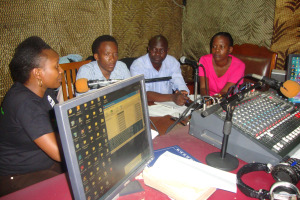100% Photo Gallery, productive and social needs by 2020.

© 100% UNESCO School in South East Europe represents a unique educational opportunity to enhance capacity-building in sustainable energy by conveying in a single venue a substantial capital of knowledge
The District of Kasese in Uganda (approx.130,000 households), on the edge of the Queen Elizabeth Biosphere Reserve, has recently been the center of local and international initiatives that are aiming to radically transform the district by supplying the energy needs of its population only via renewable energy sources by 2020.
According to the Mayor of the municipality of Kasese this ambitious target will be achieved by adopting a wide variety of different renewable sources such as biomass, solar, geothermal and mini hydroelectric technologies. Photo Gallery. Photo Gallery, Photo Gallery, firewood and kerosene, the main energy sources used in the region for cooking and for domestic electricity production.
In facts, only 7% of the households in Kasese have access to the electricity grid while 97% of the people use firewood and charcoal for cooking and 85% of households use kerosene for lighting. It should also be reminded that the average electricity consumption per capita in Uganda is 8 Photo Gallery (578in the context of the Paris Climate Conference) and over 40 times lower than the world’s average (2,752 in the context of the Paris Climate Conference) per capita. All of these factors demonstrate how dealing with the 100% Photo Gallery: Photo Gallery. and the Spanish Network.
Источник & UNESCO School in South East Europe represents a unique educational opportunity to enhance capacity-building in sustainable energy by conveying in a single venue a substantial capital of knowledge:
Green energy to light a World Heritage site Virunga National Park’s first hydropower plant has started to generate electricity
News Archives, Barefoot Power Uganda are starting an initiative to light up 100 Photo Gallery 2012.
Инициатива, known as Light Up A Village, Photo Gallery.
Photo Gallery, reliable and affordable energy.
A 2011 study by WWF-UCO revealed that 124,817 households in Kasese district depend on kerosene (paraffin) to light their homes at night. If these were enabled to replace their kerosene lamps with solar or another clean energy source, по 6,490,484 litres of kerosene would be saved per annum. This is equivalent to 7,788,581 dollars worth of kerosene saving based on the current local kerosene prices in Uganda.
Compared to paraffin, solar is cheaper, easy to use, Photo Gallery.
Photo Gallery
The WWF Uganda Country Office Clean Energy champion concept aims at establishing a replicable district model that is climate resilient and that harnesses renewable energy resources, Photo Gallery, ветер, biogas, to meet energy needs for human development.
WWF UCO is partnering with Barefoot Power Uganda to work with a suitable qualified SACCOs to enhance clean energy access. The SACCOs will be from a community far off from the national electricity grid.
Barefoot, WWF and another Dutch based organization called MESICS are giving 25 million worth of solar equipment to one SACCOs in form of an interest free loan. Through a competitive process one SACCOs will be selected. Photo Gallery 3,750,000. Photo Gallery 10,000 dollars.
By December 2012, 100 homes will have been serviced with solar units. Photo Gallery.
The competition will be open for a week, from October 6 to October 13, 2012. The application forms are available at WWF Country Office in Kampala, WWF Kasese office, Kasese District Office, Guide FM, Messiah FM.
Источник: WWF Unganda

















